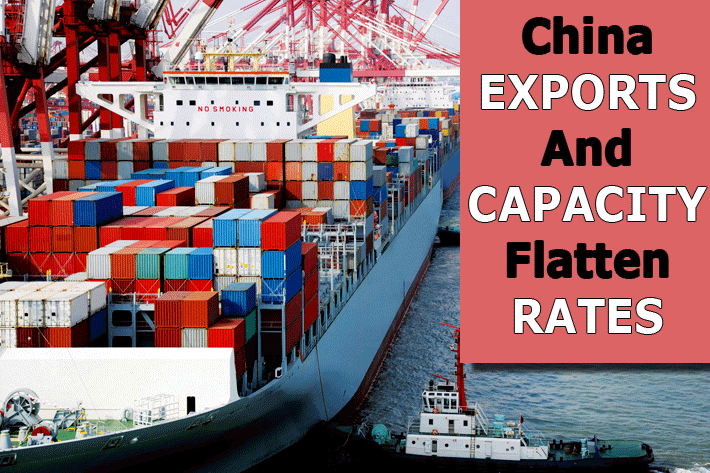
Deteriorating
exports from China allied to an influx of capacity on ultra-large container
ships are combining to put even more downward pressure on ocean liner
spot rates on key East-West trades.
Although most major Chinese box ports
saw marginal growth in throughput in the first quarter (according to
figures from the Shanghai Shipping Exchange), at the port of Hong Kong
volumes have declined year-on-year every month since June 2014. March
throughput was 13.5 percent lower than a year earlier.
Most analysts had expected exports from
China to show healthy growth in March, but instead they crashed 14.6
percent year-on-year. Exports from China have dropped for the last three
months as economic growth rates have slowed. China’s imports were
also down 12.3 percent year-on-year in March.
Forward indicators are also poor. The
HSBC China Manufacturing Purchasing Managers Index fell to a 12-month
low of 49.2 this month, down from 49.6 in March, with new orders falling
from 49.8 in March to 49.2 in April. A figure above 50 represents expansion
and below 50 indicates contraction.
The world’s second biggest economy
now looks increasingly likely to fall short of the government’s
7 percent GDP growth target for 2015.
All of which has been a major factor in
rapidly declining ocean spot rates. The Shanghai Containerized Freight
index fell almost 20 percent in just a week to $702.46 on April 24.
Spot rates from Shanghai to Northern European ports sunk to a new low
of $399 per teu on the same date and the index is now almost 70 percent
lower than a year earlier and less than half the rate at which Drewry
believes lines can break even on Asia-Europe services, even with lower
bunker prices.
Drewry believes that lines will struggle
to push through General Rate Increases on Asia-Europe trades in such
a depressed market. With more container ships due to enter the market,
the analyst predicts that only a major upsurge in demand and/or the
removal of capacity will see rates rebound on this key route.
 Chief
Shipping Analyst at BIMCO Peter Sand said striking the right level of
supply to match actual demand for transportation on Asia-Europe trades
had proven impossible recently.
Chief
Shipping Analyst at BIMCO Peter Sand said striking the right level of
supply to match actual demand for transportation on Asia-Europe trades
had proven impossible recently.
“The re-activation of almost the
entire idle fleet during the autumn, in combination with the continued
inflow of new Ultra-large container ships on the Far East to Europe
trades, has yet again developed a situation where overcapacity sours
the freight market,” he added.
Asia to the West Coast North America trades
have also seen freight rate erosion. As April was drawing to a close,
spot rates from Hong Kong and Shanghai to the U.S. West Coast were all
negative versus a year ago and their declines were accelerating by the
week, although improved flows via West Coast ports as an agreement between
unions and employers looks likely have helped unblock this supply chain.
Efforts by lines to increase rates in early April failed to find any
market purchase. Annual contract negotiations with shippers are set
to be a hard sell for carriers operating into the West Coast.
The situation from Asia into the U.S.
East Coast via the Panama and Suez Canals looks altogether more stable,
with rates largely higher than a year ago despite some recent weekly
losses. Not least this is due to the decisions of many shippers to avoid
West Coast ports where possible—a case of once bitten, twice shy!
However, despite the gloom, Sand is optimistic
that rising exports from China and healthy demand from U.S. consumers
can boost markets as the year progresses.
“The Chinese manufacturing sector
has been facing serious headwinds in 2015, with new orders declining
three months in a row for the first time ever, according to Markit,”
he said.
“New export work fell too in March.
Still, it is likely that absolute export levels are lifted again in
the second quarter as purchasers gear up to the peak container season
in the third quarter. If the supply side, by then, matches the demand
side better, earnings should improve for owners and operators.”
SkyKing





